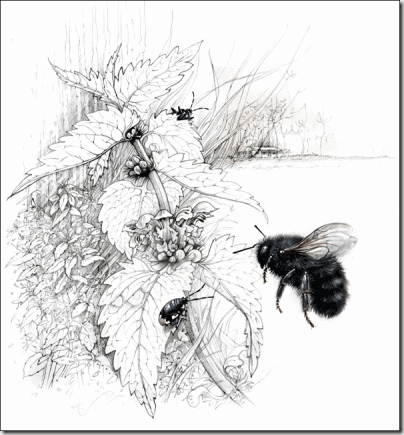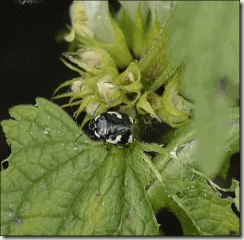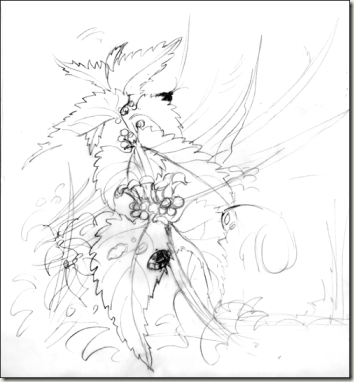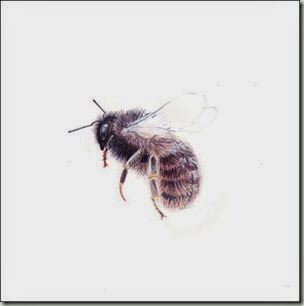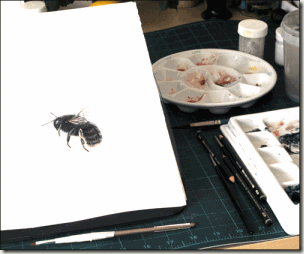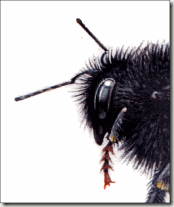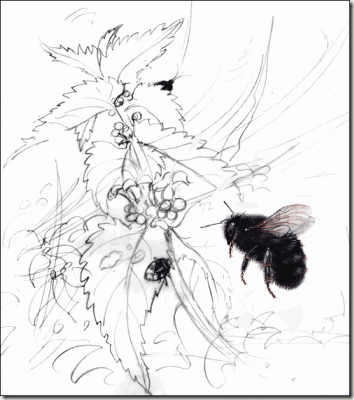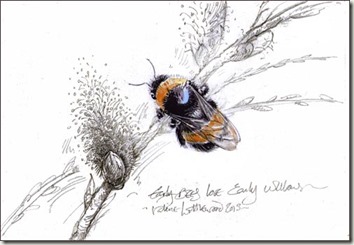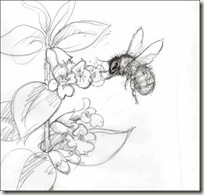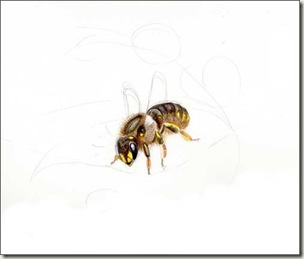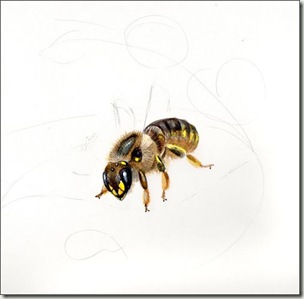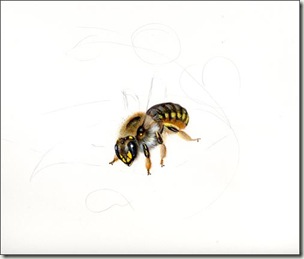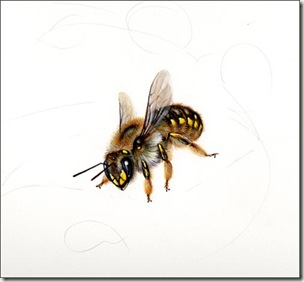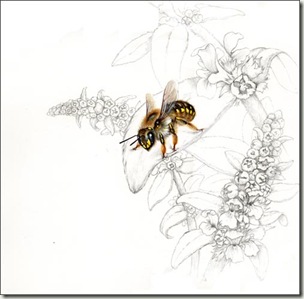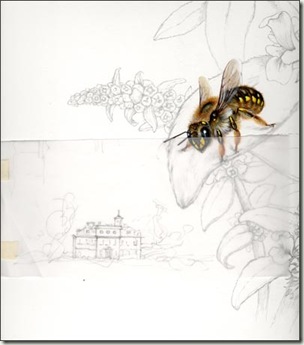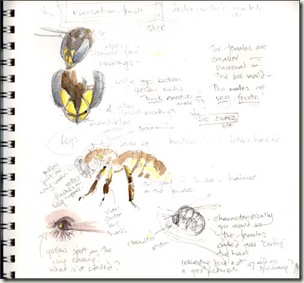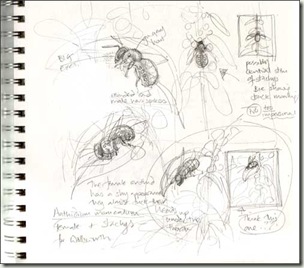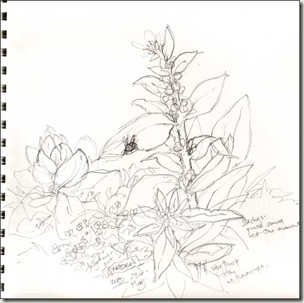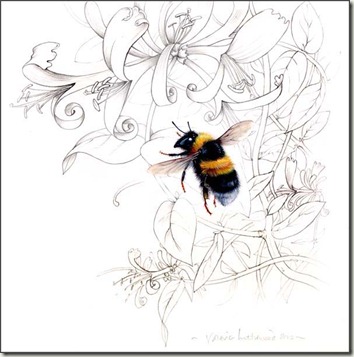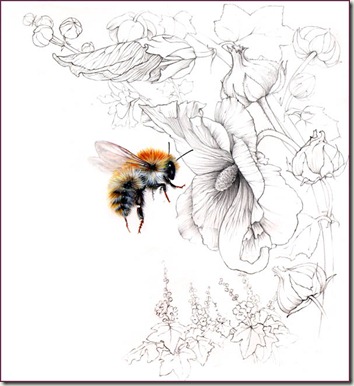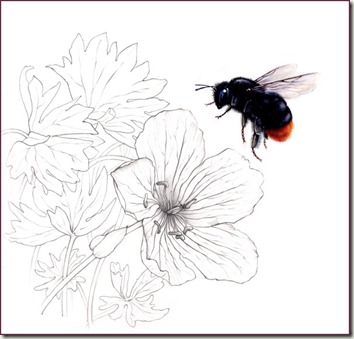I am painting a female Anthidium manicatum, the gorgeous Wool Carder Bee for Simon at Nature in Art.
I chose this one in particular because Wallsworth Hall is where I first watched this wonderful little bee stripping the hairs from the furry leaves of Lambs Ears or Stachys byzantina to use for nest building.
She is also extremely pretty!
The males and females are very similar looking except that the males are, unusually for the bee world, much bigger.. also they move in a different way. The male has an aggressive darting flight and will patrol a patch of flowers, ferociously seeing off any bee or insect intruders, head butting and attacking a perceived competitor with the awesome three spines he has at the base of his abdomen.
She on the other hand is a calmer more purposeful little bee intent on gathering fibres and foraging from the flowers of Stachys, and other similar labiates.
Both male and female have various yellow marking on their face, legs and abdomen making them easy to mistake for a wasp at a casual glance.
Notes and Sketches
Firstly, I have to get the female’s markings and characteristics correct so I start with a few notes. Where are the yellow spots? How are they different from the males, especially on the face. I notice that the lower part of the legs of the females seem very slightly thicker and hairier too. They have quite a rounded body shape and pale silky hairs on their legs.

I have not seen very many Anthidium manicatum here in the UK and the only ones I have seen have a line of yellow spots on the sides of their abdomen.
Other Anthidium species have much bolder yellow banded markings. ( I keep thinking they would make a very attractive set of pattern designs! … but not right now as I am too busy.)
Next the design. Even though they do use other plants for both food and nest material I will include the Stachys. It grows in a beautiful big patch on the front border of the Museum at Wallsworth Hall and is obviously much loved by the wool carders. Regular readers will know that I take ages to decide on poses and plants.
This time the plant is chosen and it’s only the pose I have to consider.
For me its about trying to express something of the character of the bee and how it relates to the plant. But it also has to be a good composition and hopefully an engaging painting.
First scribbles are really important for me to work out how I am going to try to achieve all this! The designer in me likes the simple central stem with the view of the bee from the top.
This would show the markings on the back quite well… but very little of the character of the bee. It would be more like a technical drawing.

To show the bee actually carding the hairs from the leaf might be interesting but they very often curl right over while accumulating the big ball of fluff under their abdomen and that’s not a particularly good pose for a painting or to show off their beautiful markings.
I think I will probably go for the design bottom right.. a front/side view looking over the edge of a furry leaf.
I planted a Stachys in the garden here. It’s struggling through, but at last with the arrival of some sun its beginning to grow, so I made a quick sketch.

At this stage it’s all about “looking”, rather than “drawing”.
These rough sketches are visual thoughts, just for me, to try to work things out.
But to draw something, however roughly, is to understand it a little more than you did before!

